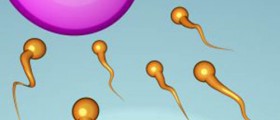
Additionally this data could contribute to the new approaches in treating infertility. Moreover, data does emphasis a special attention for drugs that target members of this closely related group of proteins to treat inflammation and atherosclerosis. One study was conducted by Japanese researchers at The Tokyo Metropolitan Institute of Medical Science, who were supervised by Makoto Murakami. Their findings suggest that family of proteins sPLA2-III was expressed in a region of the testicles known as the proximal epididymal epithelium. Mice that were lacking proteins sPLA2-III had problems with fertility because their sperm didn't mature properly. In addition they had problems with sperm motility and ability to fertilize eggs in vitro.
Another study was conducted by French scientists at Grenoble Institute of Neuroscience and led by Christophe Arnoult. Their findings suggest that in mice that group X secreted PLA2 (knowne as mGX) was a predominant constituent of a compartment in sperm known as the acrosome which has an important role in breaking down the coat that surrounds an egg so that the sperm can elicit fertilization. For this reason male mice who had insufficient mGX made smaller litters than the mice with normal levels of mGX, and mice with deficient levels of mGX were not able to fertilize eggs in vitro. Moreover, molecules that inhibited mGX and molecules that more broadly inhibited secreted PLA2s each reduced the efficiency of in vitro fertilization. However, if the presence of additional mGX was increased, so was the efficiency of IVF.
- www.cdc.gov/reproductivehealth/Infertility/PDF/DRH_NAP_Final_508.pdf
- www.cdc.gov/niosh/docket/archive/pdfs/NIOSH-279/CIBXX-reporRisk-279.pdf
- Photo courtesy of NTNU, Faculty of Natural Sciences and Technology by Flickr: www.flickr.com/photos/92416586@N05/19265682055

















Your thoughts on this
Loading...